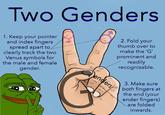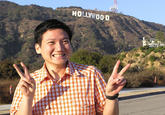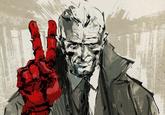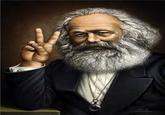NOTE: This Entry was related to the 2013 April Fools joke. For more information, please check out the KYMdb Offline Crisis Response Initiative.
| Navigation |
| About • Origin • Spread • Usage • History of References • External References • Recent Images |
About
V Sign is a hand gesture in which the index and middle fingers are raised and parted, while the other fingers are clenched. The sign is used in multiple cultures with various meanings.
Origin
A popular legend claims that the two-finger salute originated from a gesture often made by English and Welsh longbowmen during the Hundred Years' War as a sign of defiance and insult against the French who supposedly had a habit of cutting off the arrow-shooting fingers of captured soldiers. However, the authenticity of the story remains in dispute.
The earliest known documented evidence of using the V sign as an insult dates to 1901 in an Edwardian-era film depicting workers outside Parkgate ironworks in Rotherham, according to the now defunct website Icons.org.uk.
Spread
One of the most prominent uses of the V sign in modern times can be attributed to the British prime minister Sir Winston Churchill, who popularized the gesture as a symbol of victory during the World War II. By 1941, the British Broadcasting Corporation had launched the "V for Victory" campaign to promote its use and the spirit of resistance in German-occupied territories. The "V for Victory" campaign has had a large influence on popular culture – inspiring, among other things, the title for Alan Moore's V for Vendetta.
Usage
- In the United Kingdom and former British commonwealth states including Australia, Ireland, New Zealand and South Africa, the sign is used as an insult if the back of the hand faces the recipient observer.
- In the Allied nations during World War II, the gesture was used by several politicians and military personnel to signify victory, most notably Winston Churchill and Woodrow Wilson.
- During the Vietnam War, the sign was adopted once again as a symbol of victory by Richard Nixon, in similar vein to its usage during the World War II.
- In Iran during the Green Movement, the sign was adopted by demonstrators as a symbol of protest and defiance against the ruling government.
History of References

External References
[2] Strange History – Origins of the Two-finger Insult
[3] BBC News – World's best-known protest symbol turns 50
[4] Wikipedia – The Peace Sign
Recent Videos
There are no videos currently available.














Comments ( 7 )
Sorry, but you must activate your account to post a comment.
Please check your email for your activation code.